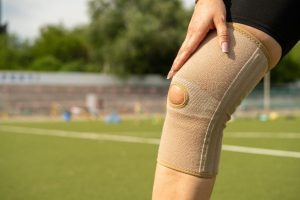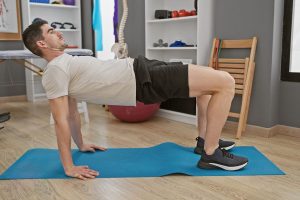Welcome to Part 3 of our October Fall Risk Blog Series! If you haven’t gotten the chance yet, make sure to check out Parts 1 and Part 2 for reference. As always, if you have a concern for yourself or a loved one, please call us at your earliest convenience. We would love to help you continue to live a long, happy, and healthy life.
Who is a fall risk?
In this post, we will examine some common statistics and (hopefully) help you decide whether or not you should be concerned. Of course, this post does not constitute medical advice, and we strongly recommend that you consult with a medical professional before you draw any serious conclusions regarding your own level of fall risk. Without further ado, let’s jump into the post!
Who is most at risk for a fall? Here are 5 widely accepted indicators:
A History of Falls
By and large, the number one indicator of fall risk is that one has fallen in the past. Specifically, if someone has fallen in the past year, then they are considered to be a high fall risk in the future.
Being Advised to Use a Walker or Cane
Being advised to use a walker or cane by another person shows that they have observed something that makes them believe you may fall. The person may be a medical professional who has evaluated your fall risk, or simply a loved one who observes your movements on a regular basis. They may be referring to an unsteady gait or a tendency to trip or miss obstacles. There is no shame in using an implement to help you keep your balance, but this will ideally be paired with a program of easy exercise to keep you independent.
Using the Hands to Help With Standing Up
Often times, as we age, we will begin to compensate for decreased strength in various ways. The most common of these is to utilize the hands and arms to push off of chairs, toilets, and tables as we stand up. This, is one of the biggest indicators that a fall may be in the future.
Requiring Assistance From Others While Negotiating Obstacles
This can include needing help to step up stairs or onto curbs. One of the primary indicators of fall risk is needing assistance from others to perform these daily movements, since there will not always be someone around to help.
Taking Medicines To Help With Sleep, or Taking Medications That Cause Drowsiness/Light Headedness
Sometimes, a medication can be helping you with a significant part of your life, but it is still important to know what the side effects can be of all the medications you are taking. If you are taking a medication known to cause drowsiness, light headedness, or aid in sleep, it can affect your balance and increase your fall risk.
There you have it! If any of the above factors describe you or a loved one, you can assess your fall risk from home or call us to get a fall risk assessment, free of charge. Stay tuned for Part 4 of our October Fall Risk Series, which will come out next Monday!

















